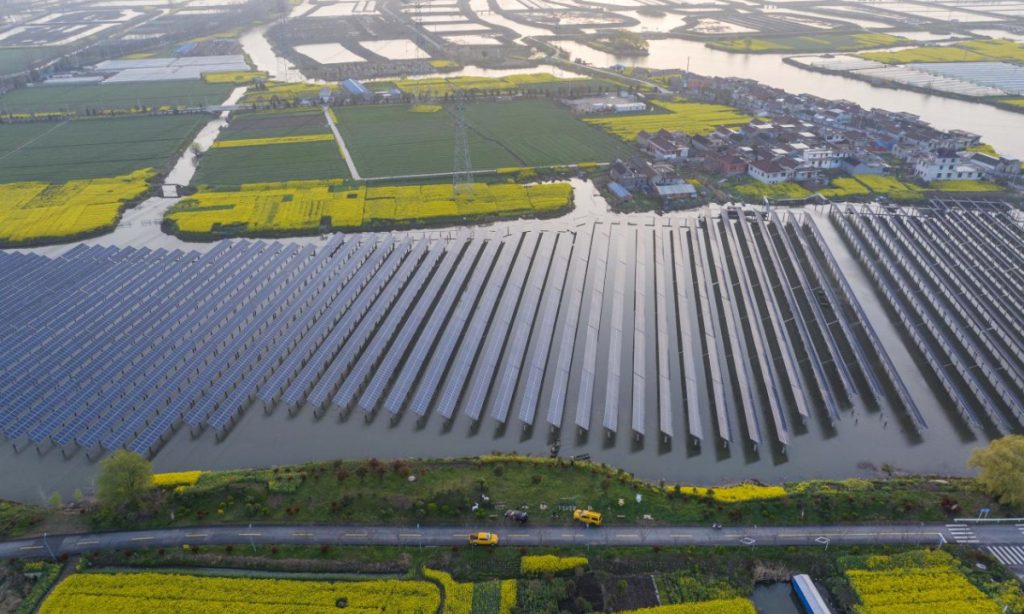Multi-energy complementary photovoltaic power generation project in full swing in Taizhou, Jiangsu

On August 30, at the pier of Bianzhuang Village in Yuxi Town, Jiangyan District, Taizhou City, East China's Jiangsu Province, the multi-energy complementary photovoltaic power generation project was under intense construction. The sound of machinery echoed, vehicles shuttled back and forth, and workers enthusiastically carried out various tasks, including pile driving, foundation pouring, support installation, and photovoltaic panel installation, all in an orderly manner. The construction was in full swing.
The project is planned to cover a water area of 2,531.66 acres (1,024.55 hectares), with 18 sub-photovoltaic systems to be installed. Using 580Wp monocrystalline silicon modules, the total capacity will reach 154.128 megawatts. The project adopts an innovative model that integrates photovoltaic power generation with aquaculture, building photovoltaic power stations over fish ponds to create a "power generation above and aquaculture below" system. This approach plays an irreplaceable role in improving the local ecological environment, providing employment for local residents, and contributing to rural revitalization by achieving both ecological and economic benefits.
To accelerate progress, the State Grid Taizhou Power Supply Company and Datang Taizhou Thermal Power have established a coordination mechanism, offering "one-on-one" services and closely monitoring the project's implementation. They also provide technical assistance to meet the diverse needs of customers and fully support the grid connection, acceptance, and operation of Taizhou's first multi-energy complementary photovoltaic power station.
Once fully operational, the project is expected to generate approximately 180 million kWh of clean energy annually, saving 72,000 tons of standard coal and reducing carbon dioxide emissions by 179,000 tons. This will create a win-win situation, enhancing both environmental and economic benefits. It is also of great significance for the region's efforts to meet the "dual carbon" goals, strengthen industrial support, and boost competitiveness.